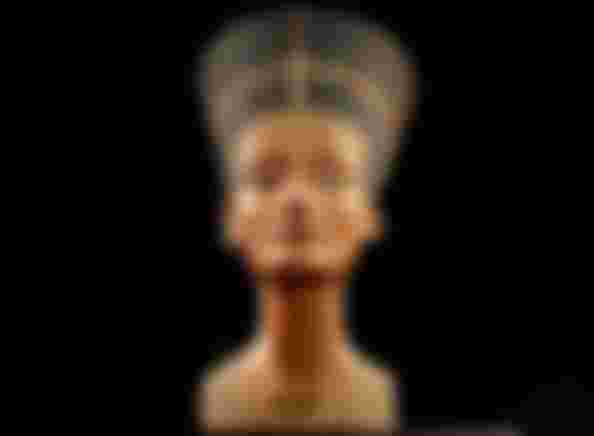More than three thousand years after her death, the wife of the Egyptian pharaoh Amenhotep IV strongly inspires archaeologists and writers. What is Nefertiti's secret?

The news of the possible discovery of Nefertiti's tomb quickly spread around the world and "brought" excitement among Egyptologists. British archaeologist Dr. Nicholas Reeves published a study in July in which he stated that Nefertiti was buried in a room hidden behind the tomb of her stepson Tutankhamun, and whose door was sealed, plastered and re-painted.
"She was Cleopatra of her time. Beautiful, rich and powerful. Very powerful," said Michelle Moran, author of the historical-fictional bestseller "Nefertiti," adding that it would be a real revelation if she turned out to be buried behind Tutankhamun's tomb.
Although there were other very powerful women in the history of Egypt, Nefertiti did not stop enchanting.
"The answer to that lies in the bust. Just look at the fine line of her neck, her arched eyebrows, and her perfect cheekbones. She could be a supermodel today. The ideal of beauty hasn't changed at all," Moraine comment.
Indeed, when German archaeologist Ludwig Borchardt found the bust in 1912, he wrote in his diary: "Suddenly I was holding a living Egyptian work of art in my hands. Something that cannot be described in words, but must be seen."
Seeing the face of the great queen Nefertiti in the Egyptian Museum in Berlin, Moran got the inspiration to write a bestseller. But it was not only beauty that attracted Moran. She wanted to once again "breathe" the life of this woman. And the more she discovered Nefertiti and ancient Egypt, the more determined she was to "tell" her story. It took her more than two years to do that.
Behind Nefertiti's beauty "lies" the story of one of the greatest Egyptian coups - the story of the reign of Akhenaten, a heretical king who brought a new era to Egypt during his reign (from 1352 to 1336 BC). He abolished polytheism and introduced the worship of a single deity, Aten, whose symbol was the Sun's disk (which was then considered a heresy), and changed the name Amenhotep the Fourth, which he received at birth, to Akhenaten as part of Aten.
In his time, a new style in art appeared - people, animals and objects became more realistic in depictions, with all their curves and imperfections, and the illusion of movement was supported. Such art left deep impressions on writers like Moran, who was especially touched by the scene Nefertiti with children:
"She is portrayed not as a queen but as a mother playing with children and cuddling them on her knees."
And exactly such scenes "fed" Morana's imagination while she was writing the book.
Little is known about Nefertiti's life. By finding her tomb, however, one could better understand and present not only the life of this queen but also a very turbulent period in the history of Egypt, better known as the Amarna period.
"Finding the tomb would be an incredible event. Many questions could be answered, such as when she died, how she died and whether she inherited her husband as his co-regent," Michelle Moran concluded.
Did the queen look like this?
Thanks to 3D technology, the face of the Egyptian queen Nefertiti was reconstructed, scientists from the University of Bristol announced.

The face of Queen Nefertiti, one of the most famous rulers of Ancient Egypt, often called the most beautiful woman of the ancient century, has been reconstructed using the latest three-dimensional technology.
Namely, Egyptologist Dr. Aiden Dodson from the University of Bristol received permission from the Egyptian Ministry and the Egyptian Museum to remove the protective glass that covered the "Young Ladies" mummy in order to study it.
Using the latest 3D imaging technology, the mummy’s face has been digitally mapped to create a replica of a head that is actually identical to the Queen Nefertiti sculpture.

However, the skin color of the 3,400-year-old ruler raised a lot of controversy. Many people on social media claimed that it was probably not that bright in reality.
“This fascinating face is similar to the ancient representations of Queen Nefertiti. With the reconstruction of the face and the collected genetic data, we have enough evidence that the so-called younger lady was exactly Nefertiti ", explains Dodson.
By the way, "younger lady" is the name used for an unidentified mummy from the Valley of the Kings, which, thanks to DNA analysis, is known to be the mother of Pharaoh Tutankhamun. Although she has been identified as Nefertiti several times before, that interpretation was rejected because it is known that she was not the mother of the famous "boy of the king", but his stepmother. As far as is known from the source, Nefertiti had only six daughters.



Wow this was really a legend